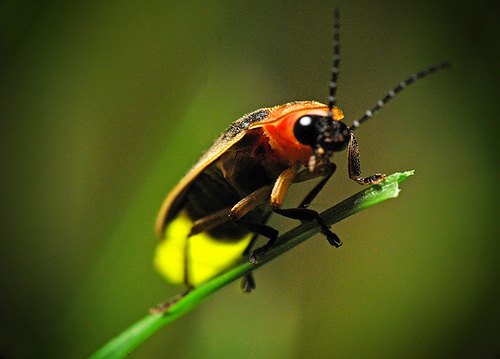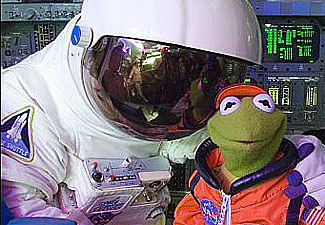Sarah would like to know, "How many lightening bugs could a pterodactyl eat?"
According to at least one source, Lampyridae, commonly called lightening bugs or fireflies, have only been around since the Eocene epoch about 56 million years ago.2 In contrast, pterosaurs died off at the end of the Cretaceous Period 65.5 million years ago. Pterodactyls in particular existed about 150 million years ago, so it seems like they missed each other by about 100 million years. Still, if they crossed paths, I'm sure the glow bug would have made a tasty treat.
 |
| "No!!! Don't eat me!!!" |
Adult pterodactyls have an estimated wing span of about 1.5 m. That's about the same wingspan as a fruit bat. Assuming they have similar weights, that would put the pterodactyl at about 1.5 kg. He probably eats about 10% of his weight each day, meaning he'd consume 150 grams of food. Assuming lightening bugs weigh roughly 10 mg, a pterodactyl could consume about 15,000 lightening bugs over the course of one day.3 According to the song, the pterodactyl "ate 10,000 lightening bugs", a very good estimate indeed. Well done, Sarah!
To find out more about Sarah, you can visit her website or follow her on Twitter.
[1] Just a warning, the lyrics are not safe for work.
[2] We know this because you can find fossils of insects trapped in amber.
[3] I suppose one could instead consider the maximum number of lightening bugs a pterodactyl could eat if he kept going non-stop. According to Donald R. Griffin's Echos of Bats and Men, bats can catch a mosquito once every 6 seconds. Assuming pterodactyl have a similar catch rate (unlikely since they probably don't have a bat's echolocation abilities) and a lifespan of 20 years, a pterodactyl could have eaten 100 million lightening bugs.





